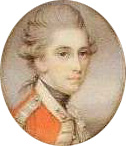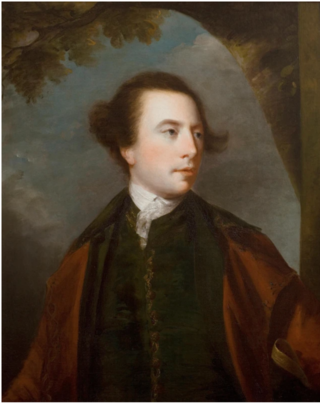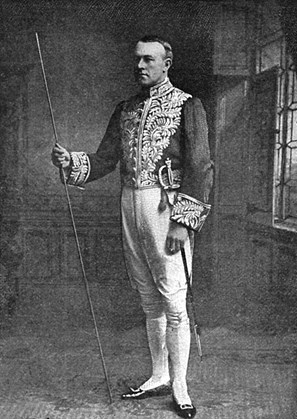| Earldom of Lindsey held with Earldom of Abingdon | |
|---|---|
  Arms of Bertie, Earls of Lindsey: Argent, three battering rams, barwise in pale proper, armed and garnished azure [1] | |
| Creation date | 1626 |
| Created by | Charles I |
| Peerage | Peerage of England |
| First holder | Robert Bertie, 1st Earl of Lindsey |
| Present holder | Richard Bertie, 14th Earl of Lindsey, 9th Earl of Abingdon |
| Heir apparent | Henry Bertie, Baron Norreys |
| Subsidiary titles | Baron Norreys |
| Seat(s) | Gilmilnscroft House |
| Motto | Loyalteé me oblige (Loyalty binds me) [2] |

1st Earl of Lindsey.

Earl of Lindsey is a title in the Peerage of England. It was created in 1626 for the 14th Baron Willoughby de Eresby. He was First Lord of the Admiralty from 1635 to 1636 and also established his claim in right of his mother to the hereditary office of Lord Great Chamberlain of England. Lord Lindsey fought on the Royalist side in the Civil War and was mortally wounded at the Battle of Edgehill on 23 October 1642. He was succeeded by his son, the second earl. He also fought at Edgehill and surrendered to the Parliamentarians in order to attend his mortally wounded father. Lord Lindsey later fought at the First Battle of Newbury, Second Battle of Newbury, and at Naseby. His son from his second marriage, James, was created Earl of Abingdon in 1682. He was succeeded by his son from his first marriage to Martha Cockayne, the third Earl. He represented Boston in the House of Commons and served as Lord Lieutenant of Lincolnshire.
Contents
- Earls of Lindsey (1626)
- Dukes of Ancaster and Kesteven (1715)
- Earls of Lindsey (1626; Reverted)
- Arms
- See also
- References
- Further reading
- External links
His son, the fourth earl, was summoned to the House of Lords in 1690 through a writ of acceleration in his father's junior title of Baron Willoughby de Eresby. He later served as Chancellor of the Duchy of Lancaster and as Lord Lieutenant of Lincolnshire and was one of the Lords Justice before the arrival of King George I. In 1706 he was created Marquess of Lindsey and in 1715 he was further honoured when he was made Duke of Ancaster and Kesteven. Both titles were in the Peerage of Great Britain. His son, the second duke, was called to the House of Lords in 1715 through a writ of acceleration as Baron Willoughby de Eresby. He later served as Lord Lieutenant of Lincolnshire. He was succeeded by his son, the third duke. He was a general in the Army and served as Master of the Horse from 1766 to 1778. He was also Lord Lieutenant of Lincolnshire. His son, the fourth duke, was briefly Lord Lieutenant of Lincolnshire but died unmarried in 1779 at an early age. On his death the barony of Willoughby de Eresby fell into abeyance between his sisters Lady Priscilla and Georgiana, Marchioness of Cholmondeley, who also jointly inherited the office of Lord Great Chamberlain (the abeyance was terminated in 1780 in favour of Priscilla; see the Baron Willoughby de Eresby for later history of this title).
The late Duke was succeeded in the earldom, marquessate and dukedom by his uncle, the fifth duke. He represented Lincoln in Parliament and served as Lord Lieutenant of Lincolnshire. He had no sons and on his death in 1809 the marquessate and dukedom became extinct. He was succeeded in the earldom of Lindsey by his third cousin, the ninth earl. He was the great-grandson of the Hon. Charles Bertie, fifth son of the second earl. Lord Lindsey was a general in the Army and also sat as Member of Parliament for Stamford. On the death in 1938 of his grandson, the twelfth earl, the line of the fifth son of the second earl failed. The late earl was succeeded by his distant relative (his fifth cousin thrice removed) the eighth Earl of Abingdon, who became the thirteenth earl. However, it was not until 1951 the Lord Abingdon was recognised in the earldom of Lindsey. As of 2017 [update] the title is held by his first cousin, the fourteenth Earl of Lindsey and ninth Earl of Abingdon.
The family seat is at Gilmilnscroft House, near Mauchline, in East Ayrshire.
















